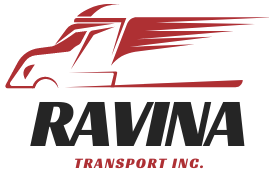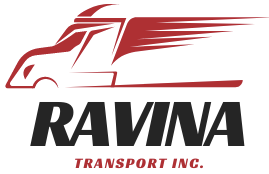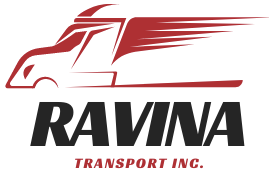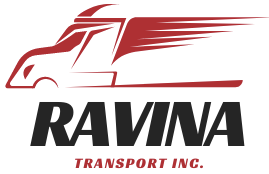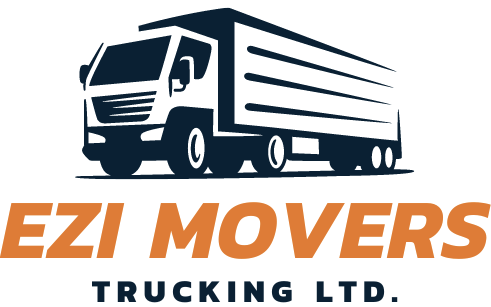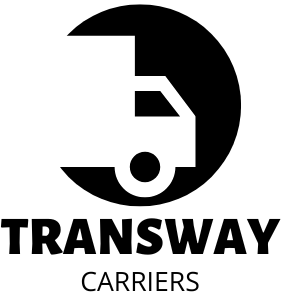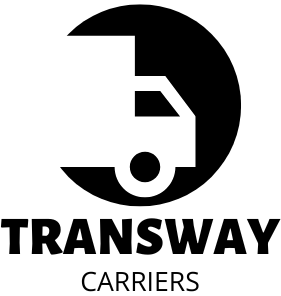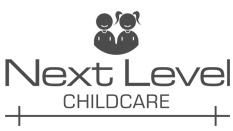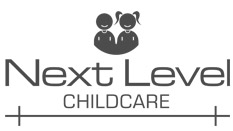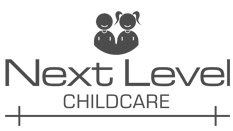Uncategorized

Talent shortages are causing more Canadian businesses to look at newcomers as a badly needed source of labour – but some say the strategy may replicate past problems with funneling high-skilled migrants into lower-skilled jobs if key changes aren’t made.
“Right now, about half of newcomers to Canada are economic migrants,” says Pedro Barata, executive director of Future Skills Centre, a skills innovation and policy think tank launched by Blueprint, Toronto Metropolitan University and The Conference Board of Canada. “The target is 60 per cent by 2025.”
To help meet its goals – 465,000 new permanent residents in 2023, 485,000 in 2024 and 500,000 in 2025 – the federal government redesigned Express Entry program. Launched in May, the program is designed to bring in workers with specific types of experience.
Over the summer, Immigration, Refugees and Citizenship Canada (IRCC) invited applicants with experience in skilled trades, health care, manufacturing and STEM (science, technology, engineering and mathematics). More recently, IRCC opened invitations to people with experience in the transportation, agriculture and agri-food industries.
By mid-October, IRCC had issued nearly 90,000 invitations to apply for Express Entry permanent residency in 2023 – almost double the 45,115 candidates invited in 2022.
It’s Canada’s most direct, strategic response yet to aligning labour market needs with economic migration, says Mr. Barata, adding that it’s a promising divergence from Canada’s historically “elite approach” to economic migration requiring university education, language skills and other conditions. Still, he wonders if it’s doing enough.
Source: THE GLOBE AND MAIL

Understand Calgary’s Job Market
Calgary, known for its energy sector, has been expanding its job market to offer broader opportunities. While oil and gas still support the economy, there’s a growing demand in areas like information technology (IT), healthcare, finance and more.
Many immigrants find jobs in areas like healthcare, IT, and construction. Other good options are retail, transport, and farming. These jobs often need less training and offer a good start in a new place. Luckily, the Calgary area has many opportunities for newcomers.
Make Use of Local Resources
Immigrant-focused organizations such as those listed below can help newcomers find current job prospects tailored for immigrants in Calgary:
- Immigrant Services Calgary: A great starting point, offering employment skill training, job search support, and much more.
- Directions for Immigrants: Tailored career services for immigrant tradespeople and professionals, including exam preparation and career coaching.
- Calgary Catholic Immigration Society: A comprehensive platform providing integration services for immigrants and refugees.
- CIWA’s Career Services: For foreign-trained women looking to utilize their skills in Calgary
- Centre for Newcomers: Non-profit immigrant settlement agency that offers training and language services in Calgary.
Learn About Canadian Workplace Culture
In Canada, teamwork is very important. Everyone works together and respects each other. It’s common to say “please” and “thank you” often. Being on time for work or meetings is very important. Also, Canadians value clear communication. So, if you don’t understand something, it’s okay to ask questions.
Some places, like Immigrant Services Calgary and Directions for Immigrants, offer training on Canadian work culture. They can help newcomers understand and fit in better. Remember, when you understand how workplaces work in Canada, it’s easier to find and keep a job.
Consider Accreditation and Certification
For some professions, Canadian accreditation might be required. Explore how to get your foreign credentials recognized and if additional certifications are necessary for your field. You can ask potential employers directly or work with a local immigration service to learn more.
Source: ABES
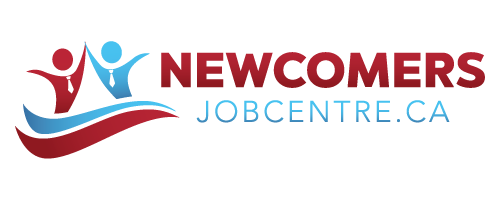
Preparing for your future can be both a scary and exciting stage of your life. There are so many options and avenues to choose from! To broaden their horizons and experience something new, many students opt to study abroad.
Out of all the many choices available to students, Canada comes out on top. In fact, the number of international students has risen dramatically over the last few years. Why the sudden infatuation with Canada and its maple leaf? Here are 7 good reasons to choose Canada for your studies.
- Live in a bilingual environment
Canada is a bilingual country, which makes studying here an excellent opportunity to develop your language skills and boost your prospects for an interesting career. Coursework in French and English is an integral part of Canada’s educational system, which enriches its cultural and community life. - Benefit from a world-class education
Canadian college and university diplomas are recognized around the world. The Canadian educational system encourages cross-disciplinary studies and the development of transferable skills (e.g., critical thinking, teamwork and communications) and uses cutting-edge technology and digital media.
Five Canadian universities ranked in the 2018 top 100 for the best universities in the world according to the Times Higher Education World University Ratings.
To find the university that interests you, visit Education in Canada.Read the full article by National Bank
Find more tips and advice about integrating and immigrating to Canada by signing up for the National Bank’s newsletter.
Source: Newcomers Canada
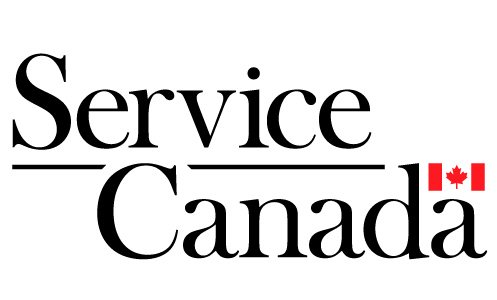
Canada has always been a land of opportunities for Newcomers. Since Confederation in 1867, more than 17 million immigrants have come to Canada. With the share of Canada’s growing population made up by immigrants currently at 21.9 percent, business owners have a real opportunity to recognize this pool of skilled immigrants as a business asset and use it to their full advantage. There are many reasons to consider hiring a newcomer but we’ve shortened it down to 10 main benefits.
Number and proportion of foreign-born population in Canada, 1871–2036

- Newcomers to Canada arrive with a breadth of experience. The diversity of education, training and on-the-job skills newcomers have before arriving in Canada can bring a fresh perspective to existing business practices. A newcomer can bring a fresh pair of eyes to the team and challenge the status quos.
- Newcomers can help an organization expand into other markets. A newcomer may speak other languages and could have knowledge and experiences of international business practices. They will be able to provide local knowledge if the company is looking to expand in their country of origin and could introduce local contacts, saving both time and money.
- Newcomers can help an organization connect with their audience. 1 in 5 Canadians are immigrants – in Calgary it’s almost 1 in 4, and nearly half of all Toronto residents were born outside of Canada. Skilled immigrant employees can help organizations serve these large – and growing – markets. They can help organizations better understand and connect with their customers. Newcomers can also expand your customer base through improved cultural awareness and communications and potentially ensure the organization is the right fit for the local market.
- Newcomers are here to stay. A common misconception when hiring a newcomer is the risk that they will shortly return back to their home country. A recent report from Statistics Canada showed that a growing number of immigrants who come to Canada as temporary foreign workers are in fact staying longer and obtaining permanent residence. For workers on temporary visas there are many pathways for them to gain permanent residency and/or extend their work permit. Schemes such as the CEC and Federal Skilled Worker Program are making it easier for skilled workers to extend their stay in Canada.
- Newcomers have already demonstrated they have a proven capability to settle into the Canadian labour market. Gaining a work permit for Canada is not a easy process. It takes time, effort and financial costs. Canada introduced the Express Entry system in 2015 with the aim to invite eligible candidates to apply for permanent residence on a priority basis. The 2016 census showed that more than 60% of immigrants who arrived between 2011 and 2016 were admitted through an economic program. Economic arrivals have to demonstrate that they have the proven capability to settle into the Canadian labour market as part of their application.
- Newcomers will recognize an opportunity and will work hard to keep it. A newcomer is eager to start a life in Canada and will value an opportunity given to them. Newcomers often don’t have any Canadian work experience so they have to work harder to prove their skills and abilities to demonstrate their fit with the role.
- A Newcomer can improve employee relations through increased diversity. A study at the University of Florida found that workplace diversity increases employee morale and causes employees the desire to work more effectively and efficiently. Diversity in leadership within a firm can also allow managers to bring in new skills and methods for achieving unity within their teams. Additionally it can enable each member of the team to broaden their own cultural awareness and appreciation. Job seekers are also drawn to companies with diverse workforces because it is evident that the companies do not practice employment discrimination.
- Newcomers are a fresh wave of talent in a low unemployment market. Many parts of Canada are experiencing the lowest unemployment rates in 40 years. The workforce is shrinking as unprecedented numbers of workers retire and fewer new workers enter the labour market. However demand for skilled labour is growing, fueling the low unemployment rates. Skilled immigrants are constantly arriving in Canada and bring fresh talent in an environment of labour shortages.
- Hiring newcomers can enhance a corporate image. Annual awards such as the national Canada’s Best Diversity Employers and many local awards recognize the work that employers do to capitalize on skilled immigrant talent. In addition to being recognized in these awards, hiring newcomers can also enhance the corporate image among international customers.
- The positives of hiring a newcomer outweighs the negatives. This article has outlined many benefits to an organization which considers newcomers in its recruitment strategy. Although there can be challenges, such as in every new hire, they are often outweighed by the advantages. In Canada’s increasingly global economy, it could be argued that a company open to hiring newcomers will be able to compete against the challenging unemployment rates and ensure they are keeping relevant to both their customers and their employees.
Source: Newcomers Canada

A recent study by Statistics Canada revealed that landed immigrants from Africa and Asia had the highest employment rates on average, compared to landed immigrants from other regions around the world.
The study looked at the employment rate of immigrants from various regions of the world in Canada, who were over 15 years of age. Overall, these newcomer groups had the following employment rates in 2023:
• Africa: 67.7% employment;
• Asia: 66.3% employment;
• Latin America: 66%;
• North America: 56.6%; and
• Europe: 56.6%.
Note that for this cohort the national average employment rate was: 62.7%.
These results were also consistent across sexes, with data including just males seeing the same order of regions as overall immigrants above the age of 15. When correcting for just females, Latin America advanced to second place in terms of employment rating, with Asia coming in third—with this exception the rest of the results for females mirrored the previous two cohorts.
Core aged working population: The opposite is true
However, this is not all that the study revealed. Perhaps most interestingly is the fact that when correcting results to only include core-aged immigrants (individuals aged 25-54), these results were almost exactly inverted.
The following are employment rates for core aged immigrants by region of nationality in 2023:
• Europe: 88.3% employment;
• Latin America: 82.8% employment;
• North America: 82.7%;
• Asia: 81.7%; and
• Africa: 79.8%.

New to Canada? You can start your job search online. Here are some tips to help you find the right job opportunity for you.
New job opportunities await!
If you’re ready to call Canada home, then finding a suitable job for your experience and passions should be your next step. If you are new to the area, gaining employment might look a little different than what you are used to. The pandemic has made searching for a job more challenging, so it’s especially important that you stay up to date on what’s happening in the labour market, so you’re prepared for the upswing.
However, there are many useful resources available to help you navigate through this difficult time and Scotiabank is also here to help. This guide will help you discover how to get a job in Canada as a newcomer, especially during the pandemic.
Polish your resume
Your resume is the key to getting interviews and job opportunities as a newcomer. However, Canadian resumes are formatted in a traditional way and employers prefer to read highlights of your work experience rather than longer lists of the jobs you have done. Consider tailoring your resume for each job opportunity you want to apply for rather than sending out the same generic resume to every listing you see.
Should you send a cover letter with your resume? The use of cover letters is still debated for its effectiveness across Canada, but a well-written letter can solidify your experience and desire to work with an employer.
Narrow your search
Thousands of jobs are posted to popular Canadian job sites daily. It can be extremely time-consuming to comb through all of them for your perfect fit. Instead, target opportunities that best fit your experience and excite you. It might take you longer to find a specific career in your field, but there is also a greater chance that you will be more qualified and satisfied when an opportunity is posted.
If you haven’t settled on a province to roll out your welcome mat, consider which area has the most opportunities in your field. For example, if you are an IT expert, settling near the big cities like Toronto or Vancouver can provide you more job options.
Essential websites and more
There are several free Canadian resources to use to better your job search success. Here are the top sites to use.
- Government of Canada Job Bank: official Canadian job listing site. Plus, search essential positions in the Job Bank’s COVID-19 listings.
- Immigration Resources: The Government of Canada has all of the immigration resources you need on one page to get your Social Insurance Number (SIN) and get your credentials assessed.

Are you using LinkedIn to its fullest to get a job?
I turned on the TV recently and saw a “CBS This Morning” interview with Jeff Weiner, CEO of LinkedIn. Needless to say, it inspired me to sit down and write. After all, I was receiving information on how to boost your LinkedIn profile during a job search straight from the CEO’s mouth, so I had to share.
Why should you use LinkedIn for your job search?
It’s no secret that LinkedIn is the top professional social networking site with 133 million users in the U.S. alone and reaching 200 countries and territories around the world. Per the Jobvite Recruiter Nation Survey, 87 percent of recruiters use LinkedIn as part of their candidate search. As a professional or student, it’s the popular place to network and look for job opportunities; even former U.S. President Barack Obama once joked during a TV press conference that he would join LinkedIn to help him land a job after his term was up!
The issue is that if you’re only updating your profile now and then, you’re not fully utilizing all LinkedIn can do for you, which includes taking hours off of your job search. Below are some tactical tips on how you can leverage LinkedIn to its fullest to expand your professional network and land your next job.
On CBS This Morning, LinkedIn’s CEO noted the following three tips to maximize the potential of your LinkedIn profile:
- Keep your profile up to date.
- Be comprehensive about current skills and objectives.
- Highlight your recent experience.
When asked what was most important about a candidate’s profile and how to make the best use of the platform, Weiner responded that first and foremost “authenticity” was important.
“Be yourself, represent who you are. It’s not just your experiences; this is not a resume … This is a more dynamic approach to representing your experiences, your skills, your objectives, what you know, what you’re interested in within a professional context,” Weiner explained. “It’s not just about the comprehensiveness; it’s also about freshness of the information, and the more complete and the more fresh, the more recent that that information has been updated, the more opportunities that are going to accrue to our members.”
14 ways to use LinkedIn to get a job
In addition to Weiner’s advice, I’ve added 11 more actions you can take to leverage LinkedIn for maximum efficiency in securing your next position. For the sake of this article, let’s say your favorite company that you just can’t wait to work for is called Gone Bananas. Follow these tips on how to leverage LinkedIn, and you’ll be an employee of Gone Bananas soon:
1. Keep your profile up to date. LinkedIn members with a profile picture are 14 times more likely to receive page views, while those who post skills are 13 times more likely to have profile views compared to those who don’t, per LinkedIn’s blog. There are more than 45,000 skills to choose from on LinkedIn to beef up your profile, so if you want Gone Bananas to notice you, make sure to regularly update your profile, add a profile photo, and include your notable skills.
2. Be comprehensive about current skills and objectives. To ensure you’re using LinkedIn to find a job correctly, don’t leave anything out about your current skills and objectives. Use your headline to share your main objective if it makes sense and add all of your skills to your page. You don’t want it to look like you haven’t updated your page in a while, as recruiters and companies might pass you by if it does.
3. Highlight recent experience. You want your recent experience evident to anyone who views your page, especially when you’re actively engaging with connections and companies to land a job — which is the reason you’re likely reading this post, after all.
4. Update your headline. Your photo, name, and headline (which is listed below your photo) are the only items people see when they do a search. Your headline should stand out and highlight what you do or what type of position you’re looking for. “HR professional connecting employees with management” are examples of headlines that are clear and might grab attention when compared to plain-Jane headlines like “Chemical engineer in the public sector.”
Related: How Different Should Your LinkedIn Profile and Resume Be?
5. Let people know you’re available. If you can announce the fact that you’re looking for a job, do so. Use your headline to make the announcement. For example, “Writer seeking businesses in need of a friendly ghost (or ghostwriter)” and “Petroleum engineer ready to strike oil and make you rich” might catch a recruiter or hiring manager’s attention.
6. Build your network to the 1st degree. Your connections can exponentially increase your exposure and access to other connections. LinkedIn makes it easy to connect with people you know by importing your contact lists from sites such as Gmail.
7. Research the companies you’re interested in and follow them. LinkedIn makes it easy to find and follow companies. If you haven’t already done so, make a list of the companies you’d like to work for and follow them on LinkedIn. This will help you stay in the know about company news and new positions as they become available.
8. Use the Advanced Search. Use LinkedIn’s Advanced Search option and do a search on your favorite companies. Find out who of your connections is associated with Gone Bananas, for example, and make a list. You can reach out to these people depending on their connection with the company. If they work there, you can ask questions about the company culture. If they are a client or service provider, you can ask what it’s like to do business with them. Get creative and have fun doing your research so you can navigate how to best approach the company for a job when you’re ready.
9. Ask for an introduction. Once you’re ready to reach out to Gone Bananas, you can ask your connection(s) to make an introduction to someone they’re connected to within the organization.
10. Look for alumni associated with your college or university. Doing a search for your college or university is a great way to connect with alumni who went to the same school as you. You can reach out to them and share this common interest to help you land your next job.
Entrepreneur, trainer, speaker, consultant, and author, Shelley Roth, has been “helping individuals, organizations, and teams improve their effectiveness and results by changing the way they think about social media and business.” When I asked her what advice she gives to help others leverage LinkedIn, utilizing your alumni network was key.
“I would suggest that one of the best, easiest ways to leverage the power of LinkedIn is through using the Alumni tool. You can first join [or follow] your alumni college and then search for past alumni at companies or places of employment you are interested in,” she elaborated, “You also can input any college and search to see how many degrees of separation you may be from alumni at any school.”
Shelley is President & Chief Navigator of the Houston-based organization, Springboard, and author of several books, including Give to Grow: 9 Principles for Conscious Business, Social Media and Life.
11. Be more than a wallflower. Be active on LinkedIn, and as Weiner suggests, be authentic and current. Post any articles you write, videos you post, and so on, as updates. Get involved with groups and interact with others on LinkedIn. The more you interact and post as a professional, the more you’ll be noticed and build recognition.
Related: 9 Ways to Make LinkedIn Work for Your Job Search
12. Get involved in LinkedIn Professional Groups. Do an Advanced Search to identify professional groups in your area and get involved. This will help expand your network, show your expertise (when you engage in online conversations and answer questions that come up), and possibly connect you to the organizations you want to work for in the future. When researching groups, you want to participate in groups that have recent activity. Otherwise, you might be wasting your time if a group doesn’t have daily or regular interaction online.
13. Research your future boss and executive team. Before going in for an interview, you can use LinkedIn to research hiring managers and interviewers to find out about their likes, interests, and more. You can leverage this information during your interview to create relatability and show that you’ve done your homework.
14. Network after business hours. According to Mashable, statistics show that only 8.33 percent of Americans use LinkedIn during working hours compared to other social media sites, such as Facebook (with almost 30 percent of people using it during work hours), indicating that you might get more interaction and exposure if you update your status, network, and connect with people and companies after business hours on LinkedIn. Test this out at different times of the day to see what works best in getting responses and other interactions.

Moving to a new country may be hard for some people. It is common to feel the following emotions when you first arrive in Canada:
- Discomfort
- Helplessness
- Frustration
- Fear
- Insecurity
- Uncertainty about how to behave
- A sense that your cultural beliefs and values are being challenged
- A sense that things are not predictable
Your first months in Canada will be full of change. You will face many challenges, especially if you have to learn English or French, or improve your language skills. You may have to take a first job or live in a home that is different from what you expected. You may need to get more education or training to get a job and build your new life here. This can create some stress in your life.
Immigrant-serving organizations
Immigrant-serving organizations (ISOs) are a great place to meet others as they offer a variety of programs and social activities you can take part in. Many also offer mentoring programs, which will match you up with another immigrant or Canadian to help you settle.
Volunteering
Volunteering your time is an excellent way to:
- meet people
- contribute to your community
- gain Canadian work experience
You can volunteer in many places, including:
- community centres
- schools
- charitable organizations
- hospitals and retirement homes
- ISOs
To find more information about volunteering, visit the Volunteer Canada website or ask an ISO for advice.
Connecting with others
Connecting with others in your new community is an important step in the settlement process. Making new friends and contacts will help you feel at home in Canada. It may also help you advance your professional goals by creating a network of people that can support you in your search for work. Here are some ways you can connect with people:
Your neighbourhood
Perhaps simplest of all is meeting new people in your neighbourhood. Introduce yourself to your neighbours and tell them that you are new to the country. If you have children, you can also meet other parents at the local playground.
Community centres
Joining activities and programs at your local community centre is also a good way of meeting new people who share your interests. Most neighbourhoods have community centres that offer many activities and programs in the areas of:
- health, fitness and recreation
- child care
- education
- leisure
- many other areas
For a list of community centres, search online or consult your municipal (city) government website.
Sports teams and sports centres
Playing sports is another good way to meet new people of all ages. In most cities and towns, there are organized leagues for all major sports at different skill and age levels. There are also sports centres where you can:
- enjoy fitness classes
- swim
- work out at the gym
- do many other sports-related activities
Joining associations or social clubs
There are many opportunities for people with common interests to gather. Examples include joining:
- neighbourhood groups
- ethnocultural clubs
- book clubs
- game clubs
- music, arts or dance clubs
You can find out about associations and clubs in your area by searching online or the local newspaper, by calling or visiting your local community centre or City Hall.
Volunteering
Volunteering your time is an excellent way to:
- meet people
- contribute to your community
- gain Canadian work experience
You can volunteer in many places, including:
- community centres
- schools
- charitable organizations
- hospitals and retirement homes
- ISOs
To find more information about volunteering, visit the Volunteer Canada website or ask an ISO for advice.
Getting involved in your child’s school
In Canada, schools encourage parents to support their child’s education by getting involved with the school and school board. Getting involved can help your child succeed and provide an excellent opportunity to become part of a school community.
Places of worship
In addition to the private practice of religion, Canadians show their religious faith in public life and in their daily activities. They also gather in:
- churches
- synagogues
- mosques
- temples
- other places of worship

Newcomers may face challenges finding a job in Canada. Statistics Canada identifies four labour market challenges faced by newcomers to Canada. One challenge is work experience.
Experience in a Canadian workplace may be a requirement or an employer preference, in both regulated and non-regulated occupations. It is useful for newcomers to present experience they have gained in another country as valuable to Canadian employers. This can be done in a resume. For more information, please visit the How do I Apply for a Job? section.
Bridging Programs
Definition of Bridging programs, Definition of internships, Definition of voluntary, and temporary work as well as Definition of self-employment are ways to gain Canadian-based work experience.
To find information on local Bridging and Employment Programs for newcomers in your province or territory visit: British Columbia, Ontario, Manitoba.
Volunteering
Volunteer work is an excellent way to gain Canadian work experience and it is unpaid. Volunteering can help you:
- gain practical knowledge of the Canadian workplace
- practise your English or French
- develop your Definition of network and access the Definition of hidden job market
- obtain Canadian Definition of references
- develop new skills
Canada’s national Job Bank offers links to volunteer opportunities and information about volunteering.
Part-time or Temporary Work
Definition of Part-time work allows for a reduced work week. Definition of Temporary work is to fill a position for a specific period of time (for example, with a start and end date).
Canada’s national Job Bank provides links to opportunities and resources about part time work.
Organizations to Help You
There are hundreds of Definition of organizations to help newcomers adjust to life in Canada. These organizations can help you in many ways, including in your search for a job. For more information on organizations that help immigrants, visit the Citizenship and Immigration Canada and the Service Canada Web sites.
For a list of employment services in Québec, visit the Emploi Québec Web site.























